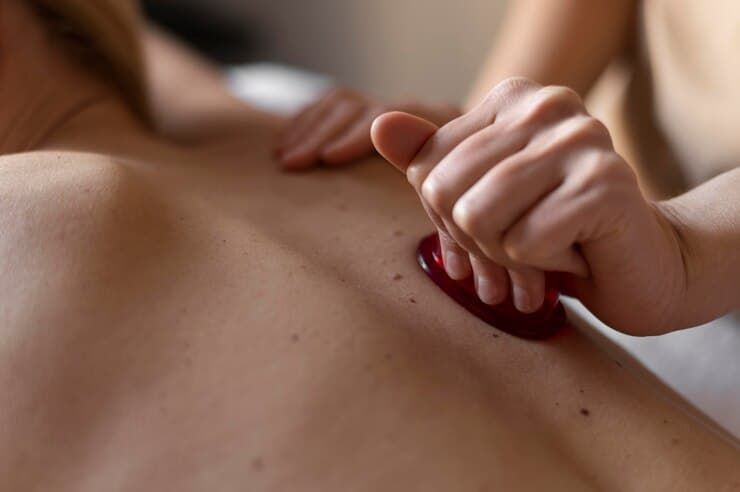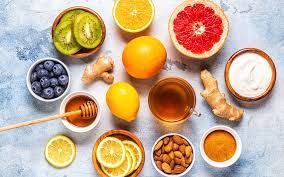8 Aftercare Tips for Deep Tissue Massage in Buffalo
Tips for Deep Tissue Massage in Buffalo

At Peak Performance Chiropractic & Wellness, we understand that a deep tissue massage is not just a luxury; it’s a vital part of your wellness journey. As we help you unwind and release tension during your session, it’s equally important to pay attention to the aftercare to maximize the benefits of your treatment. Here are eight essential aftercare tips for deep tissue massage in Buffalo that we recommend to our clients.
1. Stay Hydrated
One of the most crucial aftercare tips we emphasize is the importance of hydration. Deep tissue massage in Buffalo can release toxins stored in your muscles, and drinking water helps flush these out of your system. We recommend drinking at least 8-10 glasses of water following your session. This not only aids in detoxification but also helps keep your muscles hydrated, enhancing their elasticity and recovery.
2. Rest and Relax
After experiencing a deep tissue massage, your body may feel relaxed yet slightly fatigued. This is completely normal. We advise taking some time to rest after your appointment. Allowing your body to recuperate enhances the effects of the massage and promotes healing. Whether it’s curling up with a good book or simply taking a nap, give yourself permission to unwind.
3. Gentle Movement
While rest is essential, gentle movement is also beneficial. We encourage light stretching or a leisurely walk to keep your blood flowing and help prevent stiffness. Movement can help further release any remaining tension in your muscles and keep them from becoming tight again. Remember, though, to avoid high-intensity workouts for at least 24 hours after your massage to allow your body to recover adequately.
4. Apply Heat or Cold
Depending on your body’s response to the massage, applying heat or cold can be beneficial. If you experience soreness, using a cold pack can reduce inflammation and numb any pain. On the other hand, applying heat can help soothe tight muscles and promote relaxation. We often suggest using a heating pad or a warm towel on the areas that were treated, as this encourages blood flow and can alleviate lingering soreness.
5. Listen to Your Body
One of the most important principles we advocate is to listen to your body. It’s normal to experience some soreness after a deep tissue massage, similar to how one might feel after a workout. However, if you experience sharp pain or discomfort, it’s essential to communicate this to your massage therapist during your next visit. Understanding your body’s signals is key to tailoring your future sessions for optimal results.
6. Maintain a Healthy Lifestyle
The benefits of a deep tissue massage can be amplified by maintaining a healthy lifestyle. We encourage our clients to incorporate a balanced diet rich in anti-inflammatory foods, such as fruits, vegetables, lean proteins, and whole grains. This not only supports muscle recovery but also enhances overall wellness. Additionally, considering regular exercise and proper sleep can help your body maintain its health and vitality long after your massage.
7. Schedule Regular Sessions
To truly reap the benefits of deep tissue massage, we recommend scheduling regular appointments. Just as with exercise, consistency is vital. Regular sessions can help manage chronic pain, reduce stress, and improve overall mobility. Our skilled massage therapists at Peak Performance Chiropractic specialize in various techniques tailored to your specific needs, ensuring that each visit is beneficial.
8. Communicate with Your Therapist
Finally, we encourage open communication with your massage therapist. If you have any questions or concerns after your massage, don’t hesitate to reach out. Whether it’s about soreness, aftercare, or future treatments, our team is here to provide guidance and support. Maintaining this line of communication helps us understand your needs better and allows us to adjust your treatment plan accordingly.
Embrace Your Wellness Journey
At Peak Performance Chiropractic & Wellness, we are dedicated to helping you achieve optimal health through deep tissue massage and other holistic therapies. By following these aftercare tips, you can enhance the positive effects of your treatment and enjoy a more profound sense of well-being. Remember, your journey to health is a partnership, and we are honored to be a part of it.
If you’re looking for a deep tissue massage in Buffalo, our expert team is ready to assist you. We strive to provide a welcoming environment where you can feel relaxed and rejuvenated. Book your appointment today and take a step toward a healthier, more vibrant you.
Frequently Asked Questions :
1. Why is staying hydrated important after a deep tissue massage in Buffalo?
Staying hydrated after a deep tissue massage helps flush toxins released from your muscles during the massage, aids in muscle recovery, and enhances the elasticity of your muscles, promoting faster healing.
2. How long should I rest after my deep tissue massage?
It's recommended to rest for at least a few hours after your deep tissue massage. This gives your body time to recuperate and enhances the healing process. Taking a nap or simply relaxing can help amplify the benefits of the massage.
3. Can I exercise after a deep tissue massage?
While light stretching or a leisurely walk is beneficial, it's best to avoid intense workouts for 24 hours after a deep tissue massage. This gives your body time to recover fully without risking any strain or injury.
4. Should I apply heat or cold after my massage?
The choice between heat or cold depends on your body’s response. Cold therapy can reduce inflammation and numb pain, while heat therapy can relax tight muscles and promote blood flow. Listen to your body and apply whichever method feels best.
5. Is it normal to feel sore after a deep tissue massage?
Yes, it is common to feel some soreness after a deep tissue massage, similar to the sensation after a workout. This is normal and usually subsides within 24-48 hours. If you experience sharp or intense pain, contact your therapist for advice.












